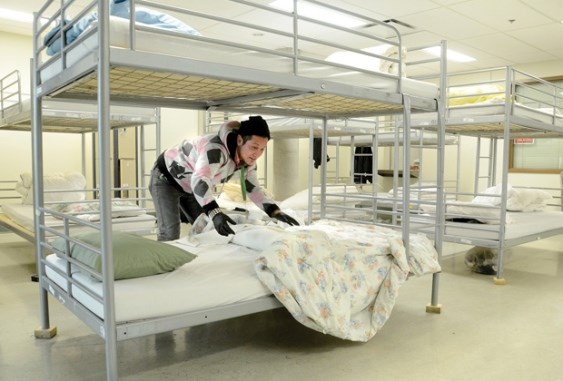There may be fewer people bedding down each night without a proper home on the North Shore, but seniors and youth are becoming bigger portions of our homeless population.
Those are some of the troubling findings in the final report of the 2014 Metro Vancouver homeless count released last week.
Every four years, volunteers from a number of social service agencies fan out over the Lower Mainland looking to count and interview people staying in shelters or on the streets.
The count done in March this year found 119 people on the North Shore, down slightly from 122 in 2011 but still a big step up from 90 in 2005.
Twenty-four were under the age of 25 and 31 were over the age of 55.
But the numbers in the count are probably much lower than the reality as it relies on volunteers physically meeting people who may be hard to find.
"Did we get everyone across the North Shore? No way. No how. That's the reality of it but the count has interesting trends," said Lynne Henshaw, co-ordinator of the North Shore Homelessness Task Force. "When you look at vulnerable populations like seniors and youth, that's quite alarming."
While roughly half of those defined as homeless are able to get some form of shelter, seniors still are worse off, according to the report.
"This is a rising number and the most alarming thing about that is 23 of those 31 seniors were unsheltered so they were living in the bush or living somewhere that isn't appropriate housing," Henshaw said.
Teens and seniors face unique challenges when they're homeless, said Nanette Taylor, executive director of Hollyburn Family Services, which does outreach for both groups.
Youth should be spending their time developing life skills and getting an education to ensure they can support themselves in adulthood but those on the street often find themselves just trying to survive, usually after running away from an abusive home, Taylor said. "At the youth safe house, for example, we increased the beds but they're full all the time. We're turning youth away."
Even seniors who live comfortably in a home tend to seek out services, but connecting people with no fixed address to those services they badly need is much harder.
Taylor said it is shocking how many of the seniors she encounters had previously led comfortable, stable lives but were then knocked off course by circumstances out of their control. "A lot of those people are people who didn't expect to find themselves in those situations. Somebody dies.
Somebody leaves. They find out where they thought they were covered, they weren't," she said.
Taylor recently came across one senior who was diagnosed with cancer and then promptly evicted because the landlord "didn't want them dying in their suite," she said. "They ended up living in their truck. They had all kinds of medical expenses. Those kind of stories just knock me right out of the water."
Taylor said it is a myth that the North Shore is only home to welloff professionals who would never be at risk of homelessness. "The reality is it isn't true," she said. "We're humans and we are prone to screw our lives up."
Henshaw and Taylor agreed, one of the biggest exacerbating factors is the ever-increasing cost of housing in the Lower Mainland. Of the 1,831, people surveyed, "rent too high" was the second most commonly listed barrier to finding housing, at 42 per cent.
Despite a boom in development across all three municipalities, very few of the new housing units are subsidized for low-income people, Henshaw said.



